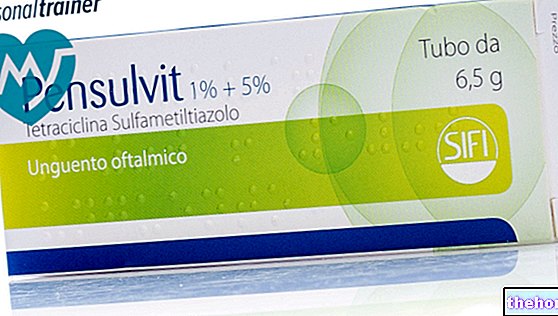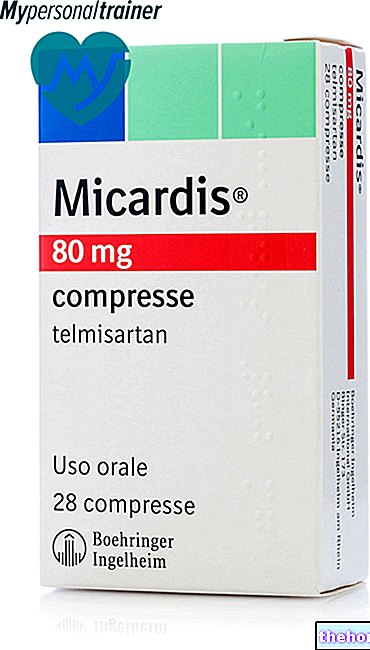Active ingredients: Dicofenac (Diclofenac hydroxyethylpyrrolidine)
Flector 180mg Medicated Patch
Source Package Leaflet: AIFA (Italian Medicines Agency). Content published in January 2016. The information present may not be up-to-date.
To have access to the most up-to-date version, it is advisable to access the AIFA (Italian Medicines Agency) website. Disclaimer and useful information.
01.0 NAME OF THE MEDICINAL PRODUCT
FLECTOR 180 MG MEDICATED PATCH
02.0 QUALITATIVE AND QUANTITATIVE COMPOSITION
One 180 mg medicated plaster contains:
Active principle: Diclofenac hydroxyethylpyrrolidine 180 mg (equal to 140 mg of Diclofenac sodium)
For excipients see page 6.1
03.0 PHARMACEUTICAL FORM
medicated plaster, consisting of hydrogel applied on an inert support (hydrophilic polymer), with self-adhesive properties, covered with a protective film. Each medicated plaster contains 180 mg of Diclofenac hydroxyethylpyrrolidine (DIEP).
04.0 CLINICAL INFORMATION
04.1 Therapeutic indications
Local treatment of painful and inflammatory conditions of a rheumatic or traumatic nature of:
• Joints
• Muscles
• Tendons
• Ligaments
04.2 Posology and method of administration
For cutaneous use only
Dosage
The product should only be applied to intact and healthy skin and should not be applied when bathing or showering.
The diclofenac medicated plaster should be used for the shortest possible time in relation to the indication for use.
Adults
The usual dosage regimen is 1 or 2 patches per day (one application every 12 or 24 hours) for up to 14 days.
If no improvement is seen following the recommended treatment period, a physician should be consulted (see section 4.4).
Children and adolescents under the age of 16:
The use of this medicated plaster is not recommended in children and adolescents under the age of 16 years because there are insufficient data to evaluate the safety and efficacy of the medicinal product (see section 4.3).
In adolescents aged 16 years and over, if the product is required for a treatment period exceeding 7 days for pain relief or if symptoms worsen, the patient or adolescent's relatives are advised to consult their doctor. .
Senior citizens
This medicinal product should be used with caution in elderly patients as they are more prone to side effects (see section 4.4).
Patients with hepatic or renal insufficiency
For the use of diclofenac medicated plasters in patients with hepatic or renal insufficiency see section 4.4.
Method of administration:
Cut the pouch containing the medicated plaster as indicated. Take out a medicated plaster, remove the plastic film used to protect the adhesive surface and apply the plaster to the joint or painful surface. If necessary, the plaster can be held in place with an elastic band.
Close the envelope carefully with the sliding closure.
The patch must be used in its entirety.
Contains a tubular net.
04.3 Contraindications
- Hypersensitivity to diclofenac, acetylsalicylic acid or other analgesics or other non-steroidal anti-inflammatory preparations (NSAIDs) or to any of the excipients of the finished product.
- Patients who have experienced asthma attacks, urticaria or acute rhinitis after taking acetylsalicylic acid or other non-steroidal anti-inflammatory drugs (NSAIDs).
- Damaged skin, regardless of the type of lesion: exudative dermatitis, eczema, infected lesion, burns, or wounds.
- Third trimester of pregnancy (see section 4.6)
- Patients with active peptic ulcer.
Children and adolescents :
Use in children and adolescents under the age of 16 is contraindicated.
04.4 Special warnings and appropriate precautions for use
If diclofenac medicated plasters are used on large skin surfaces and for a prolonged period of time, the possibility of systemic adverse events cannot be excluded (see the Summary of Product Characteristics of systemic formulations of diclofenac)
The medicated plaster must only be applied to intact and healthy skin and must not be applied to broken skin or open wounds. The patches should not come into contact with the eyes or mucous membranes
Flector should be used with caution in patients who have had a past hypersensitivity reaction to NSAIDs or analgesics, eg asthma attacks, skin rashes, acute allergic rhinitis and anaphylactoid reactions.
Patients with asthma, chronic obstructive diseases of the bronchi, allergic rhinitis or inflammation of the nasal mucosa (nasal polyp) react with asthma attacks, local inflammation of the skin or mucosa (Quincke's edema) or urticaria to treatment with NSAIDs more often than others patients.
The use, especially if prolonged, of this as of other products for topical use can give rise to sensitization phenomena. In this case it is necessary to interrupt the treatment and institute a suitable therapy.
Although systemic absorption is minimal, the use of Flector, as with any prostaglandin synthesis and cyclooxygenase inhibitor drug, is not recommended in women planning to become pregnant.
Flector should be discontinued in women who have fertility problems or who are undergoing fertility investigations.
Undesirable effects can be minimized by using the lowest effective dose for the shortest possible duration of treatment needed to control symptoms.
- Do not use with an occlusive dressing that does not let air through.
- Treatment should be stopped immediately if a skin rash develops after applying the medicated plaster.
- Do not administer topically or systemically another diclofenac-based medicine or other NSAIDs at the same time.
- Although systemic effects are expected to be low, the medicated plaster should be used with caution in patients with renal, cardiac or hepatic impairment, history of peptic ulcer or inflammatory bowel disease or bleeding diathesis. Non-steroidal anti-inflammatory drugs should be used with particular caution in elderly patients who are more prone to side effects.
- This medicine contains methyl parahydroxy benzoate and propyl parahydroxybenzoate. It can cause allergic reactions (even delayed). It also contains propylene glycol, which can cause skin irritation.
- Patients should be advised not to expose themselves to direct sunlight or sunlamps for approximately one day after removing the medicated plaster to reduce the risk of photosensitivity.
04.5 Interactions with other medicinal products and other forms of interaction
Since the systemic absorption of diclofenac following the use of medicated plasters is very low, the risk of developing clinically significant interactions with other medicinal products is negligible. Clinical investigations carried out with Flector medicated plaster used concomitantly with other steroidal and non-steroidal anti-inflammatory drugs (salazopyrine, hydroxyquinoline, etc.) did not highlight phenomena of interaction. However, the possibility of competition between absorbed diclofenac and other drugs with high plasma protein binding cannot be excluded.
The concomitant topical or systemic use of other drugs containing diclofenac or other NSAIDs is not recommended (see section 4.8).
04.6 Pregnancy and lactation
Pregnancy
The systemic concentration of diclofenac, compared with oral formulations, is lower after topical administration. Referring to the experience of treatment with NSAIDs for systemic administration, the following is recommended:
Inhibition of prostaglandin synthesis may adversely affect pregnancy and / or embryo / fetal development. Results of epidemiological studies suggest an increased risk of abortion and cardiac malformation and gastroschisis after the use of a prostaglandin synthesis inhibitor in early stages of pregnancy. The absolute risk of cardiac malformations increased from less than 1% to approximately 1.5%. The risk has been considered to increase with dose and duration of therapy. In animals, administration of prostaglandin synthesis inhibitors has been shown to cause increased pre- and post-implantation loss and embryo-fetal mortality.
Furthermore, an increased incidence of various malformations, including cardiovascular, has been reported in animals given prostaglandin synthesis inhibitors during the organogenetic period.
During the first and second trimester of pregnancy, diclofenac should not be administered except in strictly necessary cases. be kept as low as possible and the duration of treatment as short as possible.
During the third trimester of pregnancy, all prostaglandin synthesis inhibitors can expose the fetus to:
- cardiopulmonary toxicity (with premature closure of the arterial duct and pulmonary hypertension);
- renal dysfunction, which can progress to renal failure with oligo-hydroamnios;
the mother and the newborn, at the end of pregnancy, to:
- possible prolongation of bleeding time and antiplatelet effect which may occur even at very low doses;
- inhibition of uterine contractions resulting in delayed or prolonged labor.
Consequently, diclofenac is contraindicated during the third trimester of pregnancy.
Feeding time
Like other NSAIDs, diclofenac passes into breast milk in small amounts. However, at therapeutic doses of diclofenac medicated plasters no effects on the infant are anticipated.
Due to the lack of controlled studies in breastfeeding women, the product should only be used during lactation on the advice of a healthcare professional. In this circumstance, diclofenac medicated patches should not be applied to the breasts of nursing mothers, or elsewhere on large areas of skin or for an extended period of time (see section 4.4).
04.7 Effects on ability to drive and use machines
The application of diclofenac medicated plasters does not affect the ability to drive or use machines.
04.8 Undesirable effects
Adverse reactions (Table 1) are listed by frequency, most frequent first, using the following convention: common (≥ 1/100,
Table 1.
Following applications for long periods of time on large skin surfaces, the appearance of systemic undesirable effects, especially at the gastrointestinal level, cannot be excluded due to the amount of active ingredient that is absorbed.
The use of the product in combination with other drugs containing diclofenac may give rise to phenomena of hypersensitivity to light, rash with blistering, eczema, erythema and, in rare cases, skin reactions with severe evolution (Stevens-Johnson syndrome, Lyell's syndrome) (see section 4.5).
04.9 Overdose
There have been no reports of overdose with diclofenac medicated plasters. Should systemic side effects occur due to incorrect use or accidental overdose (eg in children) with the product, general supportive measures are recommended to be taken in case of intoxication with non-steroidal anti-inflammatory drugs.
05.0 PHARMACOLOGICAL PROPERTIES
05.1 Pharmacodynamic properties
Pharmacotherapeutic group : diclofenac hydroxyethylpyrrolidine is classified as a non-steroidal anti-inflammatory drug for topical use - ATC class M02AA15.
Mechanism of action :
The action of Diep is expressed partly through the competitive and irreversible inhibition of the biosynthesis of prostaglandins and partly through the inhibition of lysosomal enzymes.
The new hydroxyethylpyrrolidine salt of diclofenac (DIEP), created in order to facilitate the absorption and concentration, at the level of the diseased area, of the active principle, induces the rapid appearance of the pharmacological actions characteristic of diclofenac: anti-inflammatory, anti-edema, analgesic action .
05.2 "Pharmacokinetic properties
The percutaneous absorption of DIEP after a single application of transdermal patch is gradual and constant in the first 8-10h, while it decreases in the following hours with mean plasma levels equal to 7.7 + 3.8 SD, ng / ml detected at 12 hours, and equal to 1.7+ 1.3 SD, ng / ml in the 12-24h interval.
The percutaneous absorption of the active principle after repeated application of the transdermal patch is constant and continuous over the period of 7 days of treatment at the end of which the "steady state" is reached.
The amount of unchanged diclofenac recovered in the urine on day 8, in the range 0-48 h, is 0.013% of the dose applied with the transdermal patch.
05.3 Preclinical safety data
The toxicity of the product for prolonged administration (represented by the gastric lesions characteristic of drugs of this class) was minimal and occasionally detectable only at the higher doses used (50 mg / kg).
06.0 PHARMACEUTICAL INFORMATION
06.1 Excipients
Gelatin, polyvinylpyrrolidone, 70% sorbitol solution, kaolin, titanium dioxide, propylene glycol, methyl parahydroxy benzoate, propyl parahydroxybenzoate, disodium edetate, tartaric acid, dihydroxyaluminium aminoacetate, sodium carboxymethylcellulose, sodium polyacrylate, 80-polyacrylate glycol, 1-3-butylene glycol , perfume, purified water, synthetic felt, plastic film.
06.2 Incompatibility
Not relevant.
06.3 Period of validity
In intact packaging: 3 years.
After the first opening, it is valid for 3 months if properly closed.
06.4 Special precautions for storage
Not provided
06.5 Nature of the immediate packaging and contents of the package
Flector 180 mg medicated plaster 5 Patches
Cardboard box containing 1 envelope (which contains 5 medicated plasters) of coupled paper / polyethylene / aluminum / methacrylic acid copolymer, hermetically heat-sealed on four sides.
Flector 180 mg medicated plaster 8 Patches
Cardboard box containing 2 envelopes (which contain 4 medicated plasters) of coupled paper / polyethylene / aluminum / methacrylic acid copolymer, hermetically heat-sealed on four sides.
Flector 180 mg medicated plaster 10 Patches
Cardboard box containing 2 envelopes (which contain 5 medicated patches) of coupled paper / polyethylene / aluminum / methacrylic acid copolymer, hermetically heat-sealed on four sides.
06.6 Instructions for use and handling
No special instructions
07.0 MARKETING AUTHORIZATION HOLDER
Bayer S.p.A. - Viale Certosa 130 - Milan
08.0 MARKETING AUTHORIZATION NUMBER
Flector 180 mg medicated plaster 5 patches 027757032
Flector 180 mg medicated plaster 8 patches 027757069
Flector 180 mg medicated plaster 10 patches 027757044
09.0 DATE OF FIRST AUTHORIZATION OR RENEWAL OF THE AUTHORIZATION
05/09/1996 1.3.2008
10.0 DATE OF REVISION OF THE TEXT
June 2012




























